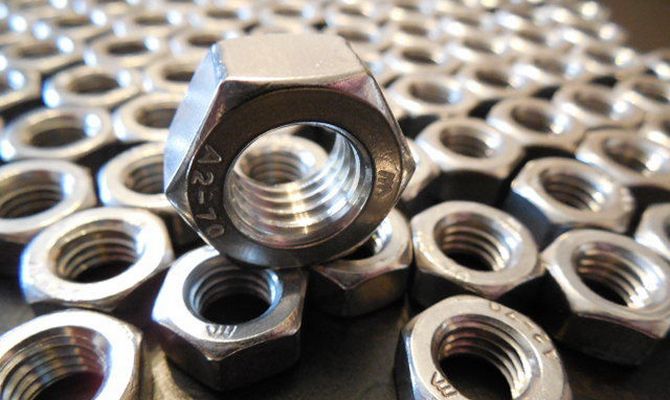Stainless steel is a broad and ever-expanding category of corrosion-resistant alloys. Depending on their specific compositions, they have different names and specifications.
A2 and A4 are two of the most common stainless steel grades used for fasteners. Both have similar tensile and yield strengths.
Corrosion Resistance
Stainless steels contain chromium, which prevents rust and discoloration by forming a barrier on the surface that won’t react with oxygen. This barrier helps prevent rusting, but it does not eliminate the need for cleaning and maintenance.
The chromium content in stainless steels also improves its corrosion resistance in acidic or basic solutions. Unlike other iron-based metals, stainless steel doesn’t corrode as quickly or as severely when exposed to these types of solutions.
It is important to choose a grade of stainless steel that is suited to the environment where it will be used. If the application involves exposure to marine environments, for example, it is critical to use a stainless steel that can withstand chloride-rich environments.
The two most commonly available grades of stainless steel are 304 and 316. While 304 is a versatile and cost-effective choice for most applications, 316 has a higher concentration of molybdenum that makes it more resistant to chemical attack. It is also easier to fabricate, clean, and weld than 304.
Durability
Stainless steel A4 is a durable material that has a long lifespan. It is resistant to oxidation and corrosion, which makes it an excellent choice for a wide variety of applications.
Unlike carbon steel, which rusts easily when exposed to air and moisture, stainless steel A4 doesn’t corrode. It contains enough chromium to form a passive film of chromium oxide that prevents surface corrosion from spreading into the metal’s internal structure.
This protective coating also allows for easy maintenance and cleaning of stainless steel. Moreover, it helps prevent bacteria from growing in the metal’s pores.
A4 is also a popular material for fasteners because of its durability and resistance to marine environments. It can withstand the high salt concentrations found in seawater and brine solutions, making it an ideal choice for marine engineering projects.
Availability
Stainless steel A4 is available in a variety of shapes, sizes and finishes. It’s also highly durable and corrosion-resistant, making it a great choice for a wide range of applications.
A4 is a type of austenitic stainless steel composed of 18% chromium and 8% nickel. It has a strong corrosion resistance and is known for its formability and weldability characteristics.
It is a popular grade for use in the food processing industry, kitchen sinks, medical equipment and architectural trim. It is also commonly used in marine engineering and chemical containers.
The designation A4-80 derives from “A” meaning it is a cold worked austenitic stainless, divided into 5 grades (1-5, hence the “4”) according to material characteristics (see Annex B of DIN ES ISO 3506-1: 1997). The “80” denotes the minimum tensile strength to be met by the material (actually the bolt, screw or nut after manufacture). This material is often used to make security fixings for medical equipment.
Cost
Stainless steel is one of the most cost-effective materials for fasteners. In addition to its tensile strength and corrosion resistance, it is also very durable and can last for an extended period of time.
The cost of stainless steel depends on the type and grade. 304 stainless steel is typically used for household products and appliances such as pots, pans, coffee urns, and stoves.
A4 stainless steel, on the other hand, is often used in industrial processes and surgical implants that require higher levels of corrosion resistance. This grade of stainless is typically more expensive than 316, but in terms of its long-term value, it can be a worthwhile investment.
Stainless steel is made by melting recycled stainless scrap with various alloys of chromium (and nickel and molybdenum, depending on the grade) in an electric arc furnace. The molten material is then tapped into a ladle and adjusted to precise customer specifications. Using modern steel-making techniques, it is possible to cut, weld, form, bend, machine, and assembly stainless steel just as easily as traditional mild steel.



